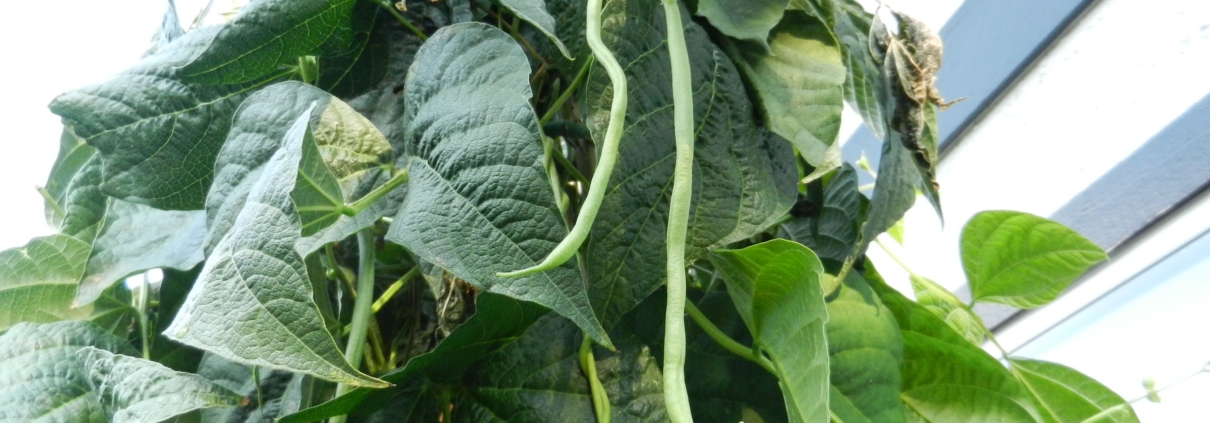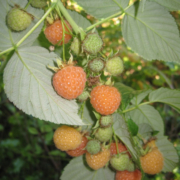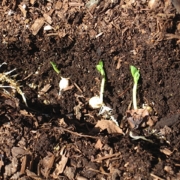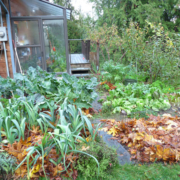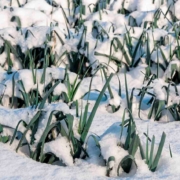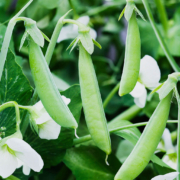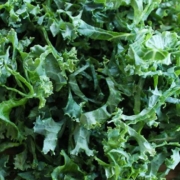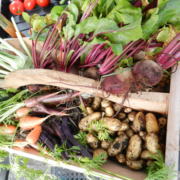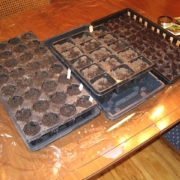The Magical Bean
By Faye
For the snap and crunch of a perfect green bean, nothing comes close to the bean you grow yourself. Those hollow, stringy supermarket beans should be banned!
Beans are one of the easiest vegetables to grow; the perfect crop for a beginner. They even make their own fertilizer! Beans are legumes, and all legumes convert nitrogen found in the air to a usable form, evident by small white nodules on their roots. Legumes have a relationship with Rhizobia bacteria in the soil, which enables the nitrogen-fixing process. All they ask is regular moisture, warm sunshine, and a moderate amount of organic material in the soil. Don’t add manure, and don’t over fertilize. Excessive nitrogen in the soil will produce a large plant with poor pod set and delayed maturity. A bean crop that has lots of flowers but few pods may have a zinc deficiency, which can be remedied by foliar feeding with liquid seaweed. Because beans have a relatively light nutrient demand on the soil, crop rotation for fertility needs is less important than for some other crops. They grow happily with other veggies except for onions, which they dislike.
PLANTING: Warmth is essential for germination; cold soil will result in rot and sporadic germination, so wait until at least mid-May if direct-sowing. For this reason, pre-sprouting in a warm room in damp vermiculite has been my habit for both peas and beans, using a well-draining tray and dense sowing of seeds. They root in less than a week, with 100% germination and no critter predation. Harden off, and plant outside when weather permits.
Talk about the magic of the bean; look at those roots!
The vision of a bean seed’s emerging root at one end, and a leaf at the other end, is surely one of gardening’s wonders, and reason enough to try the vermiculite.
BEANS FOR EVERY GARDEN
POLE BEANS:
*Indeterminate: Will need tall poles to climb around.
*Produce over a longer period, yielding more beans in a smaller area.
*Can be grown in a large container, but keeping soil adequately moist can be difficult. Smaller yield.
*If using a ‘teepee’ of poles, plant 5-6 beans at each pole base.
*Limited sun? ‘Purple Peacock’ is a variety suitable for cooler areas with less than full sun.
*Pick often, don’t let the pods get old, tough and lumpy. Eat while young and tender. Once pods get full and start to ripen off, the plant shuts down production to make seed.
BUSH BEANS:
*Determinate, usually about 2 ½ feet tall.
*Produce a large crop quickly, within a couple of weeks or so.
*Successive sowing from mid-May to late June, every 2-3 weeks, will provide a longer yield.
SCARLET RUNNER BEANS:
*Botanically distinct from Bush and Pole beans. While all beans are legumes, these belong to a different species.
*Pollinated by bees and hummingbirds, a bonus! Other beans are self-fertile.
*Prefer cool summer weather, needing more moisture and cool roots.
BROAD BEANS:
*Shelling bean.
*Plant in October for early spring eating, or in February/March for summer eating.
*Allow bean to fill out and harden in the pod, then shell when dry.
SOYA BEAN:
*Edamame, the best known soya bean, has been cultivated in China and Korea since 5000 BC, and is now a staple in Japanese cuisine.
*Not suitable for containers.
*Never soak the seed before planting.
*Must be cooked, and pod not edible.
Whether eaten raw or cooked, the green bean has earned a place of honour at our summer table. For its high nutritional kick, beauty in the garden and ease of growing, this magical bean deserves a star.
